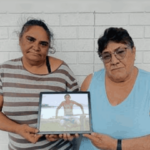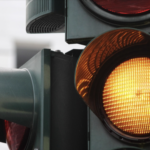Intersectional Oppression in the Criminal Justice System

Intersectionality is the concept that people are made up of multiple social identities, such as gender, ethnicity, class and sexual orientation. These aspects of identity are not mutually exclusive. They intersect to form a whole, which differs from the separate components.
The theory holds that forms of oppression – sexism, xenophobia, homophobia, transphobia – also overlap. This suggests that social inequalities and injustices have a multidimensional basis, meaning a person’s lived experience can be compounded by multiple oppressions.
The term was coined by American legal scholar professor Kimberlé Crenshaw back in 1989. The professor posited that African American women are discriminated against in ways that don’t fit neatly into legal definitions of racism and sexism.
Crenshaw argued that African American women are often overlooked when it comes to gender oppression and racism, as the discourse on sexism often focuses on the experiences of white women, whereas that of racism has a focus on African American men’s experiences.
This often renders African American women legally invisible and without legal recourse.
Intersectionality and crime
Criminologists have traditionally been interested in the relationship between crime and race, gender and class, and how these factors determine differences in offending, case processing and victimisation. Although, the intersection of these factors and crime has often been overlooked.
However, this is changing. Today, there’s “a wealth of empirical research” that looks at the role of “criminal justice processes in perpetuating unequal outcomes for a diverse group of impacted peoples,” Dr Vicki Sentas, senior lecturer at the UNSW Faculty of Law outlined.
The doctor pointed out that “multiple forms of systemic social disadvantage” have led to “racialised and working class populations” being “over-criminalised.” And this approach “challenges” criminologists to look at different forms of discrimination inherent in the justice system “not as separate issues, but in combination.”
Policing bias
“It’s well established that police target those they understand to be the ‘usual suspects’ in everyday street encounters for minor offences,” Dr Sentas told Sydney Criminal Lawyers®.
An example she gave was the over-policing of young men from Arabic-speaking backgrounds in Sydney’s Bankstown in the mid to late 90s. This was at the same time that young people of an Asian background were being subjected to intense police scrutiny in Cabramatta, a 1997 NSW Faculty of Law study found.
During the 1990s, there were reports of criminal youth gangs running rampant in western Sydney, but the Australian Institute of Criminology found the idea to be “largely a media myth.” And questions were raised about the methods of NSW police were using, when dealing with youths from ethnic minorities with socially disadvantaged backgrounds.
The victims of crime
However, intersectionality doesn’t only reveal how coinciding prejudices impact those who are the subject of intense police monitoring, it also uncovers how multiple institutionalised biases lead to people being targeted by crime.
In the United States, the rise in the murder rate of trans women of colour continues unabated. So far this year, seven women have already been murdered.
Last year accounted for the greatest number of transgender murders in US history with 27 people murdered, most of whom were trans women of colour.
Meanwhile, in the UK, there’s a rise in hate crimes against disabled women. A 2013 study found that disabled women were two to five times more likely to be the victims of sexual assaults, than non-disabled women and men.
The researchers found that if a “collective identity” is established, then a particular hate crime can be pinpointed. This can then prevent re-victimisation from happening and lead to appropriate services and policies being implemented.
The over-incarceration of Indigenous women
There’s a massive overrepresentation of Aboriginal and Torres Strait Islander people in the Australian prison system.
The Australian imprisonment rate is at an all-time high at 208 inmates per 100,000 adults. But this pales in comparison when you consider the Indigenous incarceration rate in this country. It’s at 2,346 prisoners per 100,000 of the First Peoples population.
But, as Dr Sentas pointed out, what’s a lesser known fact is that “the largest growth in the prison population nationally” is that of Indigenous women.
While Aboriginal and Torres Strait Islander women make up about around 3 percent of the overall female population in this country, they account for 34.3 percent of all incarcerated women in Australia.
Between 2000 and 2010, the imprisonment rate for Indigenous women rose by 58.6 percent, this is compared with 35.2 percent for Indigenous men, and 22.4 percent for non-Indigenous women.
Dr Sentas stresses the reasons behind the mass incarceration of Indigenous women “needs urgent attention – from the growth in police proceeding against Aboriginal women by way of arrest and through court processes.”
A desperate cycle
However, the reasons behind this overrepresentation are hard to define, “as a silence often pervades the consideration of Indigenous women in the criminal justice system,” according to Dr Lorana Bartels, associate professor at the Canberra University School of Law.
Dr Bartels wrote in a 2011 paper that for many Indigenous women who find themselves involved with the prison system, it becomes normal for them to be in and out of gaol on minor offences. And these women are often younger and less educated, than non-Indigenous female inmates, and they’re more likely to have children and be unemployed.
And on top of this, there’s a lack of support and housing for these women when they’re released from prison, which contributes to their high levels of reoffending. In 2011, the recidivism rate for Indigenous women was 67 percent.
Nowhere to turn
There are also enormous barriers to accessing the Australian criminal justice system for Aboriginal and Torres Strait Islander women who are suffering domestic abuse.
Due to the high-level of violence perpetrated upon Indigenous people by the police throughout Australian history – as well as the prevalence of Aboriginal deaths in custody – there exists a lack of trust in engaging police.
This leads to a situation where Indigenous women can be subjected to gender-based violence, but have nowhere to turn to as the system of justice is overtly racist and lacks culturally appropriate remedies.
Defining injustices
The value in engaging criminal justice from an intersectional perspective is that a better understanding of “how multiple factors of oppression function synergistically” can be gained. And then “those aspects of the criminal justice system that operate unfairly” can be defined, Dr Sentas explained.
“Intersectionality focuses attention to the specific policies, processes and laws that have negative effects across people’s life experiences of identify and disadvantage,” she concluded.







